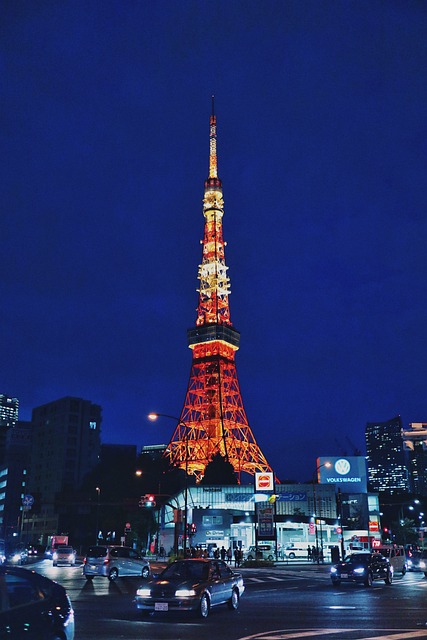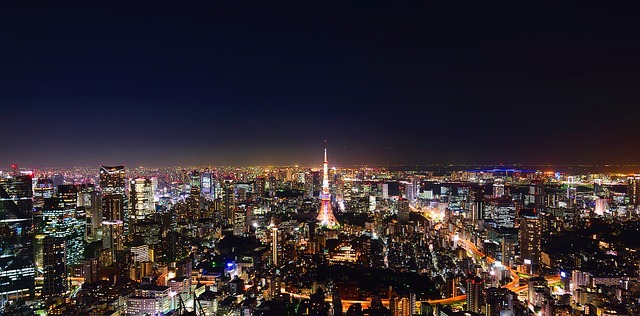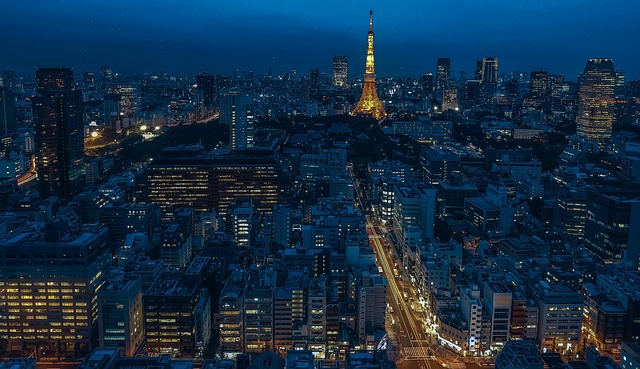When people think of Tokyo’s skyline, one image often comes to mind: the bright orange-and-white lattice structure of Tokyo Tower glowing against the night sky. Standing 333 meters tall, Tokyo Tower is not only one of the city’s most recognizable landmarks but also a beloved cultural symbol that has drawn millions of visitors since its completion in 1958. Although newer observation towers such as Tokyo Skytree have since joined the skyline, Tokyo Tower remains a favorite destination, combining nostalgic charm, panoramic views, and a rich history that reflects Japan’s post-war transformation.
Tokyo Tower is an iconic symbol of Japan, offering breathtaking city views and a glimpse of Tokyo’s vibrant spirit.
A Symbol of Japan’s Post-War Rebirth

Tokyo Tower was constructed during a period of rapid recovery and modernization following World War II. Inspired by the Eiffel Tower in Paris, it was designed to symbolize Japan’s rebirth as a peaceful, technologically advanced nation. At the time of its completion, it was the tallest structure in Japan, a title it held for decades. More than just an architectural feat, the tower also served as a television and radio broadcasting antenna, helping connect the country during its era of economic growth.
Today, even with newer communication towers in operation, Tokyo Tower continues to broadcast signals and remains an enduring emblem of Japan’s resilience and progress.
Observation Decks with Breathtaking Views
For visitors, the main attraction of Tokyo Tower is its two observation decks.
- The Main Deck, located at 150 meters, offers sweeping views of Tokyo’s sprawling cityscape. From here, visitors can spot iconic neighborhoods such as Shinjuku, Shibuya, and Roppongi, as well as landmarks like the Imperial Palace. On clear days, Mount Fuji can even be seen in the distance, making it a highlight for photographers and travelers alike.
- The Top Deck, situated at 250 meters, provides an even more dramatic perspective. Renovated in recent years, this deck now features a futuristic interior design with mirrored surfaces and ambient lighting, creating an immersive atmosphere that enhances the viewing experience. Guided tours to the Top Deck also include multimedia presentations that explain the tower’s history and the evolution of Tokyo as a global metropolis.
For those seeking a thrill, the Main Deck also has a glass floor section, allowing visitors to look straight down at the ground below—a heart-pounding experience that is especially popular among children and adventurous tourists.
Illuminations and Seasonal Events
One of Tokyo Tower’s most enchanting features is its nighttime illumination. The tower is lit up daily, with colors changing depending on the season or special occasions. The standard illumination includes a warm orange glow in winter and a cooler white in summer, while special displays celebrate events such as Christmas, cherry blossom season, or international awareness days.
Couples, families, and photographers often gather around the tower at night to enjoy its magical glow. For many Tokyoites, seeing Tokyo Tower illuminated is a nostalgic reminder of their city’s beauty and spirit.
The tower also hosts a variety of seasonal events. During the summer, visitors can enjoy fireworks displays with the tower as a backdrop, while in winter, festive decorations and projection mapping create a holiday atmosphere. The tower frequently collaborates with popular anime and cultural icons, offering limited-time exhibitions and light shows that attract both domestic and international fans.
FootTown: Entertainment Beneath the Tower
At the base of Tokyo Tower lies FootTown, a four-story building filled with attractions, shops, and restaurants. Visitors can find souvenir stores selling tower-themed goods, cafes with panoramic views, and interactive exhibits.
One of the highlights in recent years has been the Tokyo One Piece Tower, an indoor amusement park based on the globally famous manga and anime One Piece. Though the attraction closed in 2020, it demonstrated the tower’s role as a hub for pop culture and family-friendly entertainment. The space now hosts rotating exhibitions, art events, and character collaborations that ensure every visit feels unique.
For those seeking relaxation, FootTown also includes a variety of dining options, from casual eateries to restaurants offering Japanese and international cuisine. Enjoying a meal with the tower rising dramatically overhead is an experience in itself.
Cultural and Historical Significance
Beyond entertainment, Tokyo Tower has deep cultural resonance. It has appeared in countless movies, dramas, anime, and advertisements, often symbolizing Tokyo itself. For Japanese people, the tower represents both nostalgia for the Showa era and pride in the country’s modernization.
Visitors can also explore small exhibitions detailing the tower’s construction and role in Japanese history. These displays explain how more than 200,000 liters of paint were used to give the tower its distinctive color and how it became a beacon of hope during Japan’s rebuilding years.
Tokyo Tower vs. Tokyo Skytree
Many first-time visitors wonder whether to prioritize Tokyo Tower or Tokyo Skytree. While Skytree is taller and technologically advanced, Tokyo Tower offers a more romantic and historical charm. Its location in central Tokyo makes it convenient for exploring nearby attractions like Zojoji Temple, Roppongi Hills, and Shiba Park. For travelers who want both panoramic views and a sense of cultural heritage, Tokyo Tower is an essential stop.
Accessibility and Nearby Attractions
Tokyo Tower is located in the Minato Ward of Tokyo and can be accessed easily via several subway lines. The nearest stations include Onarimon Station, Akabanebashi Station, and Kamiyacho Station, all within a 10-minute walk.
The surrounding area is worth exploring as well. Zojoji Temple, a historic Buddhist temple with deep ties to the Tokugawa shogunate, sits at the foot of the tower and creates a striking contrast between tradition and modernity. Shiba Park, one of Tokyo’s oldest public parks, offers pleasant walking paths and excellent spots for photographing the tower framed by seasonal flowers.
A Place of Memories and Inspiration

For many Japanese people, Tokyo Tower holds a personal place in their hearts. Families recall childhood visits, couples cherish romantic moments, and tourists carry home unforgettable photographs. It is a site where history, culture, and entertainment converge, offering something meaningful for every visitor.
Whether one visits during the day to admire the expansive views, at night to witness the glowing illuminations, or during a special event, Tokyo Tower never fails to leave a lasting impression.
Conclusion: Tokyo’s Enduring Beacon
More than six decades after its completion, Tokyo Tower continues to shine as a symbol of the city’s energy and optimism. While taller and more modern structures may share the skyline, none can replace the warmth and legacy of this beloved landmark.
For travelers, Tokyo Tower is more than just an observation tower—it is a chance to connect with Japan’s history, experience breathtaking scenery, and enjoy a piece of the cultural fabric that makes Tokyo one of the world’s most fascinating cities.
A visit to Tokyo Tower is not simply about looking down at the city below; it is about looking back at the past, appreciating the present, and gazing forward into the future—just as the tower itself has done for generations.



comment